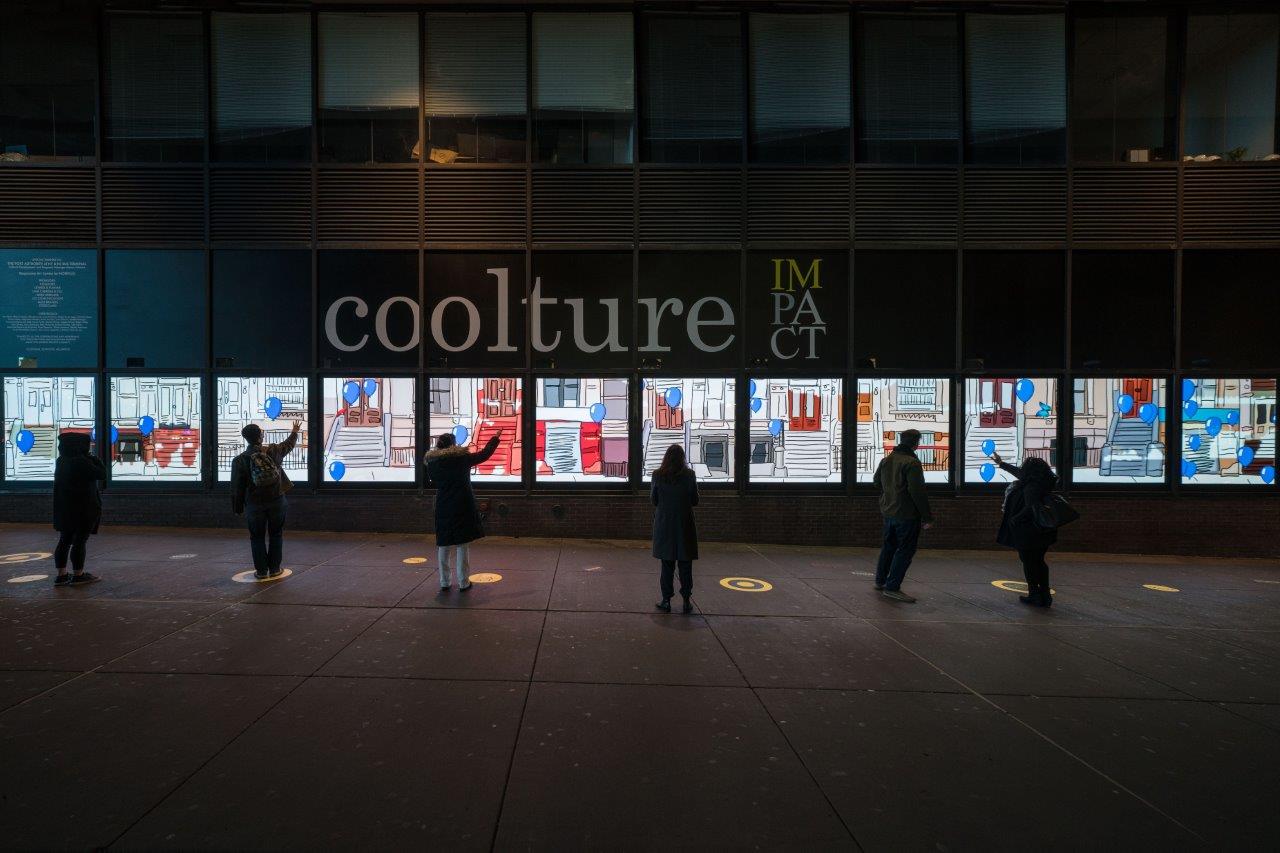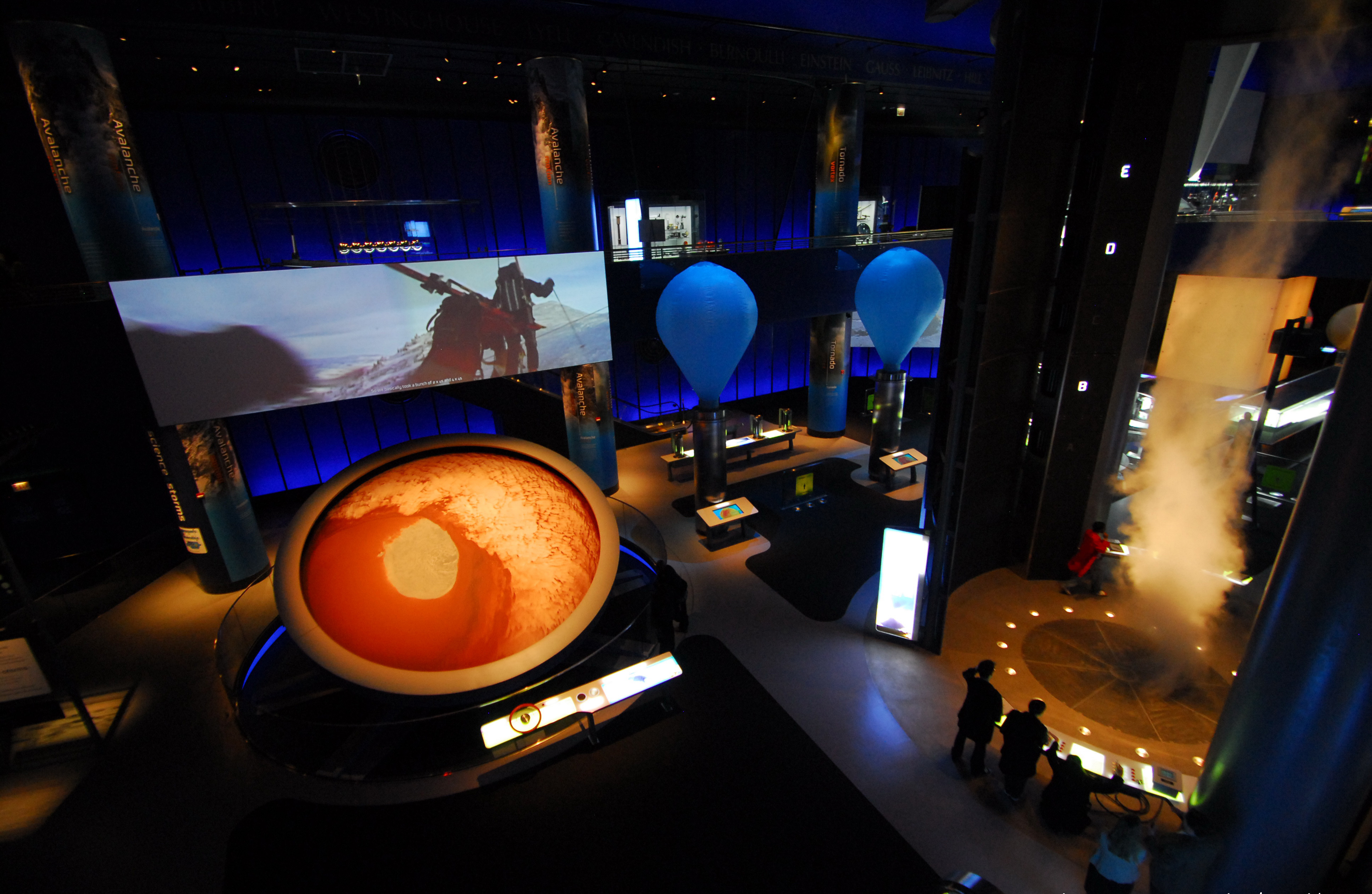High Tech Storytelling: Museums, Exhibits, and AV
Late last year, the New York Port Authority Bus Terminal in Manhattan’s Times Square hosted Coolture Impact, a giant video wall installation powered by technology from display solutions developers Leyard and Planar. Conceptualized by New York cultural and branding firm Coolture, the project saw the transformation of 12 ground-level windows into portals of dynamic, interactive content.
Coolture Impact was conceived as a technological environment in which works of responsive art are activated by and delivered to mass audiences. The installation was based on a site-specific implementation of NoirFlux’s Interaction Framework software system. Also integral to the project were ZED 3D depth and motion sensing cameras from Stereolabs and a set of Leyard TVH Series (TVH2.5) fine pitch LED video walls with a 2.5mm pixel pitch. Visitors and passersby were encouraged to engage with the installation, bringing its content to life with their movements and gestures.

Ana Calvo de Luis, founder and managing director at Coolture, explained that the intent behind Coolture Impact was to bring “positive light” to a busy area, where some 250,000 people pass by every day. “This is an example of how we can create social impact and a truly immersive experience by combining art with forward-looking technologies,” she said. “Art is the language, and technology is the medium for communicating it.”
Calvo de Luis isn’t the only one who believes in the power of art and technology working together. As the museum and exhibits market seeks new ways of telling stories and engaging the public, AV is playing a starring role.
Projection and display technology manufacturer Christie has been appointed the official displays and projection partner for Expo 2020, a World Expo that will take place in Dubai, UAE, from October 2020 to April 2021. The manufacturer will be demonstrating its laser projection technology, with more than 250 of its D4K40-RGB projectors displaying “evolving scenes” on Al Wasl Plaza’s 130-meter-wide dome surface, which can be viewed from above.
[How AV is Moving Museums Forward with Immersive Technology]
Christie has become a prominent player in the museum and exhibits markets, which is a natural evolution from its heavy presence in theme parks. Bryan Boehme, executive director of global sales and business development for the company’s entertainment division, noted that Christie’s single-chip DLP projectors are popular in museums, and that its MicroTiles LED display solution, combined with Pandora’s Box video processing and show controller, and Terra processing and control products, are also gaining traction in this space.
A daily selection of the top stories for AV integrators, resellers and consultants. Sign up below.
Boehme said that one of Christie’s primary goals for the museum and exhibits market is to deliver solutions that are not only quiet but inconspicuous, explaining that integrators are trying to “make the technology invisible. You don’t want to see the technology or feel like it’s technology––you just want the experience.” He added that his company’s single-chip projectors help address this challenge, allowing installers “to do very short focal lengths and create almost a zero-degree offset on those very short lenses. That allows us to put the projectors at ceiling height or even into the ceiling and project onto [large surfaces], and it feels like you don’t know where the image is coming from.”
Mad Systems is an Orange, CA-based technology company that specializes in AV integration. Mad Systems founder Maris Ensing highlights the firm’s QuickSilver Media Server and its discrete, compact form factor: “We took a system to site recently that would have previously [required] two racks of equipment—we carried it, basically, in a briefcase,” he said. “The system doesn’t need a control room because our show controller now runs on one of these sticks––you can just plug it into the back of a monitor or projector somewhere, and you do all of your programming on one of the monitors. Once you’re done with it, you reselect the exhibit source and [people don’t] even know that you have a show controller running your system.”

QuickSilver features patent-pending facial and color recognition technologies, which Ensing believes have the potential to transform the visitor experience. “We’ve just added a combination of facial and license plate recognition [that enables us to] identify people when they park so we can provide an experience all the way through, from arrival to departure, and deliver appropriate media,” he explained. He added that the servers will swap languages and subtitles seamlessly, and that they are capable of customizing content based on demographics: children, for example, could receive a slightly different experience from adult visitors. If experts are invited to an event, more in-depth, professional content could be delivered to them.
The theme of Expo 2020 Dubai is “Connecting Minds, Creating the Future.” Boehme believes that this event will inspire the next shift in how AV is applied in museums and exhibits. “[It’s] really going to help us grow the next generation of what museums, science centers, and cultural centers are going to want to do in more permanent ways once people see what is at this expo,” he said. “With our partnership with Expo 2020, we’re creating an opportunity to really expand that next generation.”
Museums, Exhibits...and Special Events
While many venues deliver immersive experiences with technology at the forefront, plenty of museums and exhibit spaces rely on traditional AV systems to support special events. Daniel Mei, associate principal at Auerbach Pollock Friedlander, a performing arts and media facilities design consultancy headquartered in San Francisco, CA, explained that his firm’s museum work takes place largely in auditorium spaces. He has also executed a number of projects involving specific spaces in a museum that may be rented out for corporate or private events, and that require the infrastructure to run AV systems, lighting, and the rigging to support this equipment, as well as art pieces.
The challenge for professionals like Mei is that museum auditoriums––whether they’re in a traditional theater configuration or a flexible black box space––host widely varied programming. A lecture may take place during the day, while a full-fledged concert or dance performance may be on the evening bill. “The big challenge is flexibility, because we need to support so many different kinds of events,” he said.
There are also logistical issues associated with equipment loading that Mei must consider in his designs, because museum auditoriums aren’t always located in the most convenient places within a building. “If they’re doing a performance piece where they need some scenery and maybe some additional speakers and projectors, how do we get into that auditorium without having to go through the public spaces during the day?” he illustrated. “You try to create an accessible back-of-house to get all of that in there.”
Carolyn Heinze has covered everything from AV/IT and business to cowboys and cowgirls ... and the horses they love. She was the Paris contributing editor for the pan-European site Running in Heels, providing news and views on fashion, culture, and the arts for her column, “France in Your Pants.” She has also contributed critiques of foreign cinema and French politics for the politico-literary site, The New Vulgate.
